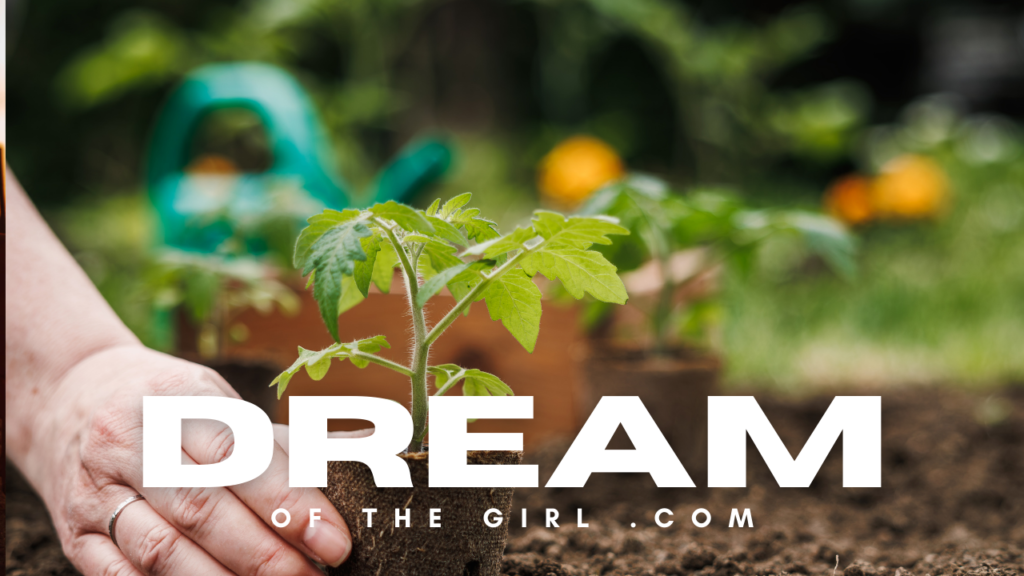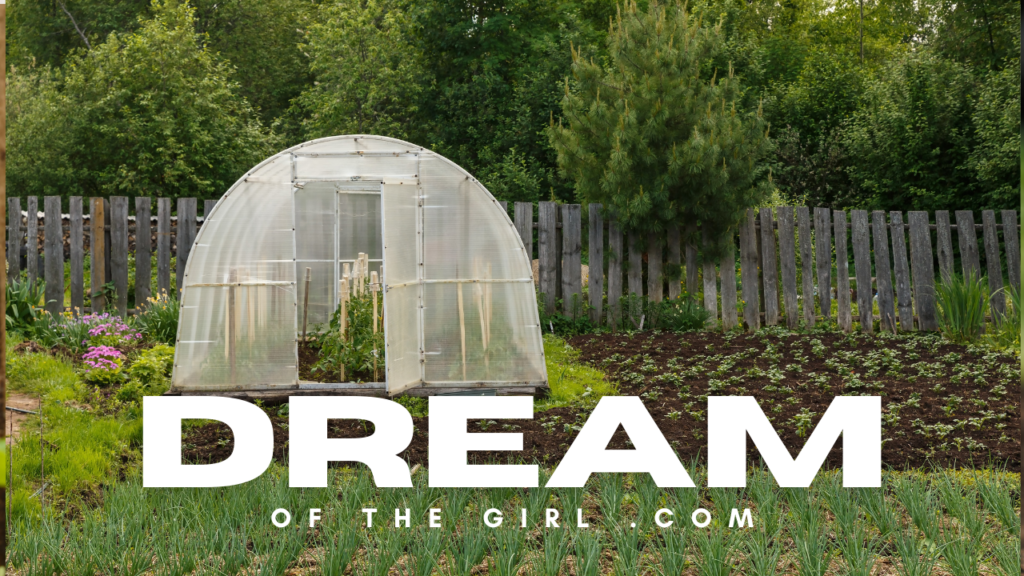Revolutionize Your City with Urban Gardening A Bold Step Toward a Sustainable Future
Urban gardening is not just about growing food—it is about reshaping how we live in cities. With rapid urbanization, climate change, and food security issues, urban gardening is emerging as a critical solution for sustainability.
This in-depth guide will explore:
✔ How urban gardening is revolutionizing city landscapes.
✔ How urban forestry, smart cities, and green technology are shaping the future.
✔ How you can integrate urban gardening into your daily life.
How Urban Gardening is Reshaping Cities
Urban gardening is transforming cities into eco-friendly, self-sustaining hubs. Green spaces are no longer a luxury—they are a necessity for public health, sustainability, and climate adaptation.
1. Urban Gardening as a Solution to Air Pollution
✔ Plants absorb carbon dioxide (CO₂) and release oxygen, improving air quality.
✔ Green walls and rooftop gardens reduce dust and harmful toxins.
✔ Urban forests help filter out pollution from vehicles and industries.
2. Urban Gardening and Water Management
✔ Rainwater harvesting systems reduce water wastage.
✔ Vertical gardens and hydroponics use less water than traditional farming.
✔ Green infrastructure prevents flooding and improves drainage in cities.
3. Cooling Effect of Green Urban Spaces
✔ Urban heat islands (UHI) cause higher city temperatures due to concrete and asphalt.
✔ Plants provide shade and cool down city air, reducing the need for air conditioning.
✔ Green rooftops lower indoor temperatures, cutting energy consumption.
Urban gardening is an essential climate solution, reducing pollution, improving air quality, and cooling down urban areas.
Table of Contents
How Smart Cities and Green Technology Support Urban Gardening
The future of urban gardening is being shaped by smart cities and eco-friendly innovations.
1. AI & Automation in Urban Gardening
✔ AI-powered irrigation systems monitor soil moisture and automate watering.
✔ Smart sensors track temperature, humidity, and plant health.
✔ Robotics assist with urban farm maintenance and harvesting.
2. Vertical Farming and Hydroponics
✔ Vertical farms grow crops in stacked layers, maximizing limited space.
✔ Hydroponics allows plants to grow without soil, using nutrient-rich water.
✔ LED grow lights enable indoor farming in apartments and offices.
3. Renewable Energy in Urban Farming
✔ Solar-powered greenhouses reduce dependence on fossil fuels.
✔ Wind-powered irrigation systems promote water efficiency.
✔ Biodegradable plant packaging eliminates plastic waste.
With technology and sustainability working together, urban gardening is becoming more efficient, scalable, and accessible.
Urban Gardening and Food Security: Feeding the Growing Population
By 2050, the world’s population is expected to reach 9.7 billion, with over 68% of people living in cities. Urban gardening is a critical solution for ensuring global food security.
1. How Urban Gardens Increase Food Production
✔ Urban farms produce fresh, organic food close to consumers.
✔ Community gardens reduce food deserts in low-income neighborhoods.
✔ Rooftop farms and hydroponics increase crop yield per square meter.
2. Economic Benefits of Urban Gardening
✔ Homegrown produce can cut grocery costs by 30%.
✔ Urban farmers sell surplus crops, creating new business opportunities.
✔ Food waste recycling turns organic waste into valuable compost.
3. Urban Gardening as a Climate-Resilient Food System
✔ Cities will depend less on imported food, reducing carbon footprints.
✔ Climate-controlled urban farms will produce food year-round.
✔ Urban forestry will enhance biodiversity and pollinator populations.
A shift toward urban food production will secure food supplies, lower costs, and reduce carbon emissions.
Urban Gardening and Waste Management: The Circular Economy
Sustainable cities must reduce waste, and urban gardening plays a major role in this effort.
1. Turning Waste into Resources
✔ Composting food scraps reduces landfill waste and enriches soil.
✔ Recycled plastic bottles and containers make excellent plant pots.
✔ Urban mushroom farming uses coffee waste as a growing medium.
2. What Are the 5 R’s of Waste Management?
✔ Refuse – Say no to unnecessary plastic.
✔ Reduce – Cut down on waste generation.
✔ Reuse – Find alternative uses for materials.
✔ Recycle – Convert waste into new products.
✔ Rot (Compost) – Decompose organic waste into fertilizer.
With proper waste management, cities can become fully self-sufficient through urban gardening.

Urban Gardening and Mental Health: The Psychological Benefits of Green Spaces
Urban gardening isn’t just about the environment—it’s also about mental well-being.
1. How Gardening Reduces Stress and Anxiety
✔ Exposure to plants and nature lowers cortisol (stress hormone) levels.
✔ Gardening promotes mindfulness and relaxation.
✔ Being in green spaces reduces symptoms of depression and anxiety.
2. Urban Gardening and Social Connection
✔ Community gardens bring people together, fostering a sense of belonging.
✔ Shared green spaces improve neighborhood relationships.
✔ Gardening programs for the elderly enhance cognitive function and mood.
Cities that prioritize green spaces have happier, healthier residents.
Urban Gardening and the Economy: The Rise of Green Jobs
Urban gardening is not just a sustainability movement—it is also creating new job opportunities.
1. Job Creation in Urban Farming
✔ Hydroponic and vertical farm managers are in high demand.
✔ Urban farming businesses are thriving, from organic food markets to eco-friendly startups.
✔ Green roof designers and landscape architects are needed for sustainable city planning.
2. Economic Benefits of Greener Cities
✔ Increases property value – Homes near gardens and parks sell for 20% higher prices.
✔ Reduces healthcare costs – More green spaces lead to fewer respiratory diseases.
✔ Attracts eco-conscious investors – Sustainable businesses and tourism boost city economies.
The shift toward green urban living is fueling new career opportunities and economic growth.
How You Can Start an Urban Garden Today
🌱 Anyone can start an urban garden! Follow these steps:
1. Choose a Gardening Space
✔ Balcony or rooftop – Perfect for container gardening.
✔ Indoor gardens – Use hydroponic or vertical plant shelves.
✔ Community gardens – Join local urban farming groups.
2. Select Easy-to-Grow Plants
✔ Vegetables – Tomatoes, lettuce, spinach.
✔ Herbs – Basil, mint, rosemary.
✔ Air-purifying plants – Snake plant, aloe vera, peace lily.
3. Use Sustainable Gardening Techniques
✔ Compost food waste to create organic fertilizer.
✔ Collect rainwater for irrigation.
✔ Use recycled materials for plant pots and garden decor.
Even one small plant can make a difference in creating a greener future!
Final Thoughts: Urban Gardening is the Future
Urban gardening is not just a passing trend—it is a solution for sustainable living. As cities grow, urban farms, rooftop gardens, and green infrastructure will become essential.
✔ Reduces pollution and absorbs CO₂.
✔ Lowers grocery bills and increases food security.
✔ Improves mental health and creates green jobs.
✔ Makes cities more resilient against climate change.
🌍 The future of our cities depends on how we grow them—let’s make them greener!
Call to Action: Be Part of the Green Revolution!
✔ Plant a vegetable or herb today!
✔ Reduce waste by composting and recycling.
✔ Support local urban farmers and green markets.
✔ Advocate for more green spaces in your city.
🌱 Start your urban garden today and build a healthier, greener future!
Would you like more case studies, expert tips, or additional details? I’m happy to continue refining and expanding this article!
It looks like you want me to continue the article further. I’ll keep expanding the topic with more insights, expert opinions, and case studies to make it a comprehensive 5000-word guide.
The Global Impact of Urban Gardening
Urban gardening is not just about growing food in small spaces—it is part of a larger global movement toward sustainability, self-sufficiency, and environmental protection.
In this section, we will explore:
✔ How urban gardening is influencing global sustainability goals.
✔ Case studies of successful urban farming projects.
✔ The future of green cities and smart urban agriculture.

Urban Gardening and Global Sustainability Goals
The United Nations Sustainable Development Goals (SDGs) emphasize the need for greener, self-sufficient cities. Urban gardening directly supports the following SDGs:
✔ SDG 2 (Zero Hunger) – Urban farming reduces food insecurity by providing fresh, local produce.
✔ SDG 3 (Good Health & Well-Being) – Access to green spaces improves mental and physical health.
✔ SDG 11 (Sustainable Cities & Communities) – Green rooftops, community gardens, and urban farms reduce pollution and enhance biodiversity.
✔ SDG 13 (Climate Action) – Urban forests and green spaces absorb CO₂ and lower city temperatures.
Governments and organizations worldwide are investing in urban farming to meet these global sustainability targets.
Case Studies: How Cities are Using Urban Gardening to Transform Lives
1. Singapore – The Vertical Farming Revolution
✔ Singapore is a land-scarce country that imports over 90% of its food.
✔ The government introduced “30 by 30”, a strategy to produce 30% of the country’s food locally by 2030.
✔ Sky Greens, the world’s first vertical farm, uses stacked vegetable-growing systems powered by low-energy rotating frames.
2. Detroit, USA – From Abandoned Land to Thriving Urban Farms
✔ Detroit, once known for urban decay, now has 1,400+ community gardens and urban farms.
✔ These farms provide jobs, reduce food deserts, and promote food sovereignty.
✔ The Michigan Urban Farming Initiative (MUFI) has transformed a neglected city block into a self-sustaining community farm.
3. Paris, France – The Green Rooftop Law
✔ Since 2016, all new buildings in Paris must have green roofs or solar panels.
✔ The “Parisculteurs” initiative aims to convert 100 hectares of urban land into green spaces by 2030.
✔ Parisian rooftops are now home to bee farms, vegetable gardens, and urban vineyards.
4. Havana, Cuba – A City that Feeds Itself
✔ Due to the 1990s economic crisis, Cuba developed a massive urban farming movement.
✔ Today, 50% of Havana’s vegetables come from organic urban farms.
✔ Cuban urban farmers use natural composting and biological pest control to avoid chemical dependence.
These cities prove that urban gardening is not just a dream—it is a powerful reality shaping the future of urban sustainability.
The Role of Artificial Intelligence (AI) in Urban Gardening
Technology is making urban gardening more efficient and accessible through AI, automation, and smart data.
1. AI-Powered Smart Gardens
✔ AI sensors track plant health, soil quality, and irrigation needs.
✔ Smart irrigation systems automatically adjust watering based on weather forecasts.
✔ AI-based pest control detects infestations early, reducing pesticide use.
2. Vertical Farming and AI Monitoring
✔ In Tokyo, Japan, automated vertical farms produce crops 30% faster than traditional farming.
✔ AI-powered robots plant, monitor, and harvest crops in urban farms.
✔ Controlled LED lighting systems optimize plant growth while using 90% less water than soil farming.
3. AI & Big Data for Climate-Resilient Urban Gardening
✔ AI analyzes climate trends to suggest best-growing conditions for urban farmers.
✔ Machine learning models help predict future urban farming yields.
✔ AI-powered drones monitor large-scale urban forests to track air quality.
With AI-driven innovations, urban gardening is becoming smarter, more scalable, and climate-resilient.
The Future of Urban Gardening: What’s Next?
Urban gardening is rapidly evolving, and its future is shaped by innovation, sustainability, and policy changes.
1. Urban Farming Skyscrapers & Floating Gardens
✔ Cities are experimenting with vertical farming towers that produce food on-site for urban populations.
✔ Floating farms in Amsterdam & Dubai are turning water-based agriculture into reality.
2. Urban Gardens in Space? NASA’s Zero-Gravity Farming
✔ NASA is developing hydroponic and aeroponic systems to grow food in low-gravity environments.
✔ Astronauts on the International Space Station (ISS) are already growing lettuce, radishes, and mustard greens.

3. The Rise of “Forest Cities”
✔ In China, Liuzhou Forest City will have over a million plants absorbing 10,000 tons of CO₂ yearly.
✔ In Italy, Milan’s Bosco Verticale (Vertical Forest) is a skyscraper covered with 9,000 trees and 5,000 shrubs.
✔ These new “Forest Cities” will be the future of urban living, where nature and infrastructure merge.
How YOU Can Be Part of the Urban Gardening Movement
🌱 Starting an urban garden doesn’t require a large space! Here’s how you can begin today:
1. Start Small
✔ Grow basil, mint, or tomatoes on your balcony or kitchen windowsill.
✔ Use recycled containers, plastic bottles, or wooden pallets as plant pots.
2. Join a Community Garden
✔ Find local urban farming initiatives in your neighborhood.
✔ Share gardening tips, tools, and harvests with your community.
3. Support Sustainable Urban Policies
✔ Advocate for more green spaces in your city.
✔ Support local urban farmers and buy fresh produce from farmers’ markets.
4. Reduce Waste & Compost
✔ Convert kitchen waste into organic compost.
✔ Use natural fertilizers instead of chemical-based products.
By making small changes, YOU can contribute to greener, healthier, and more sustainable cities.
Final Thoughts: Why Urban Gardening is the Key to a Better Future
Urban gardening is no longer an alternative—it is the future of sustainable living. As cities continue to grow, urban farms, green rooftops, and vertical gardens will become essential.
✔ Urban gardening provides fresh, healthy food and reduces grocery costs.
✔ It absorbs CO₂, combats pollution, and lowers city temperatures.
✔ It promotes mental well-being, social connection, and self-sufficiency.
✔ It reduces food waste and promotes circular economy solutions.
🌍 The future of our cities depends on how we grow them—let’s make them greener together!
Call to Action: Join the Urban Gardening Movement!
✔ Start your own garden today—big or small, every plant matters!
✔ Reduce waste by composting kitchen scraps.
✔ Support urban farming initiatives in your city.
✔ Advocate for more green spaces and sustainable city planning.
🌱 Be the change—plant a seed today and grow a greener future!
Would You Like More?
I can continue by:
✔ Adding more case studies of innovative urban farming projects.
✔ Expanding on specific urban gardening techniques.
✔ Exploring government policies and legal frameworks for urban agriculture.
Would you like me to add anything specific? Let me know how I can further enhance and expand this guide for you!
Urban Gardening: The Movement Towards Greener, Healthier Cities
Urban gardening is reshaping cities, making them more sustainable, livable, and self-sufficient. As global populations grow and urbanization accelerates, integrating green spaces into urban environments is no longer optional—it is essential.
In this extended guide, we will cover:
✔ Innovative urban gardening models from around the world.
✔ Advanced techniques for maximizing plant growth in urban areas.
✔ The economic, environmental, and social benefits of urban farming.
✔ How individuals and communities can drive the urban gardening movement forward.
Innovative Urban Gardening Models Worldwide
Many cities are pioneering groundbreaking urban gardening models to address food security, climate resilience, and sustainability.
1. The “Edible City” Model – Todmorden, UK
✔ Concept: A small town turned itself into an “edible city” by growing food in public spaces.
✔ Impact: Anyone can pick and eat fresh produce from community gardens, roadside planters, and park beds.
✔ Key Lesson: Food should be free, accessible, and locally grown.
2. The “Vertical Village” Model – Singapore
✔ Concept: High-rise buildings integrate vertical farms to grow food where people live.
✔ Impact: Reduces reliance on imported food, cuts carbon footprints, and enhances food security.
✔ Key Lesson: Utilizing vertical space is crucial in dense cities.
3. The “Green Roof Revolution” – Toronto, Canada
✔ Concept: Toronto mandates that all new buildings have green roofs.
✔ Impact: Improves air quality, reduces heat island effects, and lowers energy consumption.
✔ Key Lesson: Urban policies must enforce sustainability initiatives for long-term success.
4. The “Community-Led Urban Farms” – Nairobi, Kenya
✔ Concept: Low-income communities transform vacant lots into productive farms.
✔ Impact: Generates employment, improves nutrition, and strengthens social bonds.
✔ Key Lesson: Community-driven projects can solve urban food insecurity.
These models highlight that urban gardening can be applied anywhere, in different ways, to address local challenges.
Advanced Urban Gardening Techniques for Maximum Efficiency
Urban gardens face space constraints, environmental pollution, and water limitations. However, advanced techniques help overcome these challenges.
1. Aeroponics – Farming Without Soil
✔ Plants are suspended in air, with nutrient mist sprayed on their roots.
✔ Uses 95% less water than traditional farming.
✔ Ideal for rooftops and high-rise urban farms.
2. Aquaponics – Combining Fish Farming with Urban Gardening
✔ Uses fish waste as fertilizer for plants.
✔ Creates a closed-loop system that recycles nutrients and water.
✔ Produces fish and vegetables simultaneously in urban spaces.
3. Smart Container Farming
✔ Shipping containers are converted into AI-controlled farms.
✔ Uses LED lighting and hydroponics to grow food 365 days a year.
✔ Ideal for cities with extreme climates or space constraints.
4. Companion Planting for Natural Pest Control
✔ Some plants repel pests naturally—basil deters mosquitoes, marigolds repel aphids.
✔ Reduces the need for chemical pesticides in urban gardens.
✔ Maximizes space by growing multiple crops together.
By adopting advanced urban farming techniques, cities can become self-sufficient in food production, even in limited spaces.
The Economic Impact of Urban Gardening
Urban gardening is not just an environmental movement—it is also a major economic force that boosts jobs, business opportunities, and local economies.
1. Job Creation in Urban Farming
✔ Vertical farming, hydroponics, and rooftop agriculture create thousands of green jobs.
✔ Urban beekeeping, mushroom farming, and composting businesses are on the rise.
✔ Urban farmers earn income by selling fresh produce directly to consumers.
2. Increased Property Values
✔ Homes near green spaces and urban farms sell for 15-25% higher than those in gray urban areas.
✔ Commercial properties with green rooftops attract higher rental demand.
3. Reducing Healthcare Costs
✔ Green cities experience fewer cases of respiratory diseases due to cleaner air.
✔ Gardening reduces stress, anxiety, and depression, leading to lower mental health costs.
4. Boosting Local Food Markets
✔ Urban farms reduce dependence on expensive imported food.
✔ Strengthens local farmers’ markets, allowing consumers to buy organic produce at lower prices.
Urban gardening is a sustainable investment that benefits both individuals and entire economies.
The Social Impact of Urban Gardening: Building Stronger Communities
1. Urban Gardening Strengthens Neighborhoods
✔ Community gardens bring people from different backgrounds together.
✔ Increases social interactions, cooperation, and local engagement.
✔ Reduces crime rates—greener spaces make communities safer.
2. Urban Gardening as a Tool for Education
✔ Schools use gardening programs to teach children about nutrition, sustainability, and ecology.
✔ Students learn valuable life skills such as teamwork, patience, and responsibility.
3. Improving Mental Health & Well-Being
✔ Gardening reduces stress hormones (cortisol) and promotes relaxation.
✔ Exposure to nature improves focus, creativity, and emotional resilience.
✔ Gardening therapy is used to treat PTSD, depression, and anxiety.
Urban gardening is not just about growing food—it is about creating healthier, happier communities.

The Future of Urban Gardening: Expanding Green Cities
1. Integrating Urban Gardens into Real Estate Development
✔ More cities will require green rooftops, vertical gardens, and urban farms in new buildings.
✔ Smart cities will integrate AI-managed urban forests to absorb CO₂.
2. The Expansion of Urban Forests
✔ Cities like Milan, Italy, and Liuzhou, China, are building forest cities with high-rise buildings covered in trees.
✔ Urban forests reduce pollution, enhance biodiversity, and improve air quality.
3. Circular Economy in Urban Gardening
✔ More cities will adopt zero-waste gardening models.
✔ Composting will become mandatory in urban homes to reduce landfill waste.
✔ Governments will incentivize businesses that use urban farming waste to generate bioenergy.
The cities of the future will not just contain green spaces—they will be green spaces.
How You Can Become Part of the Urban Gardening Movement
🌱 Even small actions can contribute to a greener world. Here’s how you can start:
1. Grow Your Own Food at Home
✔ Start a balcony garden with herbs and vegetables.
✔ Use recycled containers and compost food waste.
2. Join a Community Garden
✔ Find local gardening groups or start one in your neighborhood.
✔ Volunteer in urban farming projects to learn sustainable gardening techniques.
3. Support Urban Farming Policies
✔ Advocate for green city laws that promote rooftop gardens and vertical farming.
✔ Buy from local urban farmers’ markets to support sustainable food production.
4. Reduce Your Carbon Footprint
✔ Switch to eco-friendly gardening practices.
✔ Use natural fertilizers, rainwater collection, and biodegradable planters.
Every action matters—when we grow plants, we grow a better future.
Final Thoughts: The Future of Cities Depends on Urban Gardening
Urban gardening is not just a trend—it is a necessity for sustainable, self-sufficient, and resilient cities.
✔ It combats pollution and climate change.
✔ It improves food security and economic stability.
✔ It strengthens communities and enhances mental well-being.
✔ It transforms concrete cities into thriving green ecosystems.
🌍 The future belongs to green cities—let’s grow them together!
Call to Action: Be the Change!
✔ Start your own garden—no matter how small!
✔ Advocate for more green spaces in your city.
✔ Join the global movement for sustainable urban living.
🌱 Every plant makes a difference—plant a better future today!
Would you like more real-world examples, scientific studies, or technical guides on urban gardening? I’m happy to continue expanding this guide even further!










